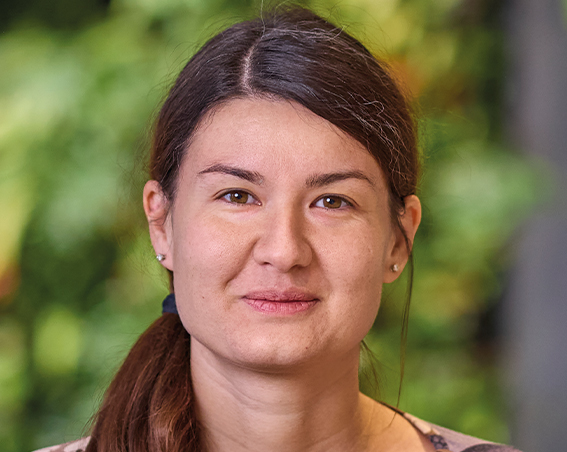Panel discussion on...
Distruptive Technology

Often a storm in a teacup – the cosmetic story
Fortunately, the cosmetic industry never makes our jobs boring although probably someone will argue that a little more peace would be appreciated. Anyway, nowadays, changes are on a regular base. These changes may have a different nature, may be consumer driven, industry driven or market driven and may affect different aspects in the whole chain of the cosmetic industry. They can touch raw material development or more the whole finished cosmetic product creation and commercialization. Some of these changes have been, or may be, an industry disruptor. The truth is that in the past years, we have observed and needed to react to countless regulatory changes, to the upcoming of some consumer driven concepts such as green, clean beauty and sustainability, and to the appearance and establishment of new technologies like AI.
We have heard and read buzz words such as green beauty, clean beauty, beauty with purpose and similar like in every possible communication channel to a point that risks sending consumers into total confusion when choosing their cosmetic product. These different classifications of cosmetic products are not regulated but are interpreted according to own principles and philosophies of both raw material and finished cosmetic product manufacturers. It is possible to give a general indication to what green beauty and clean beauty mean, but often they easily overlap and can be considered as a part of the broader sustainability driven consumer concept. Indeed, green beauty is mainly meant that the product, raw material or finished cosmetic product is sourced, produced and packed in a more ethical and sustainable way (1). This approach should emphasize not only the product safety for the skin, but also the commitment of the manufacturer to minimise the impact of their products in terms of design, production and commercialisation on the environment and the community. On the other hand, clean beauty refers to all those finish cosmetic products, which are avoiding potentially toxic and harmful ingredients (2). Already from these two general definitions, it is possible to understand how it can be disorienting for the consumers to distinguish between them. It is also clear how both fall under the overall umbrella of the sustainability concept. This topic, demanded by consumers, is not only related to the cosmetic industry but is crossing every industry. The move of the European Union towards the achievement of the European Green Deal by 2030, means it becomes compulsory for manufacturers to adjust their strategy and operations to respect the set criteria (3). This is valid also for cosmetics raw material and finished product manufacturers. European Green Deal initiatives fortify this engagement even stronger. The initiatives range from CO2 emission reduction, sustainable sourcing, plastic usage, to product design or even education of consumers in a more sustainable manner. For example, on our side, as a producer of active ingredients, since 2018 we conduct product carbon footprints for our actives applying cradle-to-gate plus waste approach (GHG Protocol). Through this we are capable to identify our hot spots and change our processes if necessary. Furthermore, in 2023 we have started to perform product water footprints assessments in entire supply chain. These are all things that are modifying our way of operating.
Another aspect that nowadays is increasing its presence in the cosmetic industry, is the use of AI technology. The first thing that I saw created with the use of AI, was a picture for an exhibition booth design, it was probably only two years ago. In just a short period, AI has found and is still finding a larger use in different areas of the cosmetic business. Now it could be implemented in almost all the necessary stages of an ingredient or product from creation to development. In our work of active ingredients development, we are already using AI, for example, to reproduce the docking of some compounds to certain molecules structure substrate to proof a binding activity. Therefore, the screening process of different compounds becomes faster, giving the possibility to analyse many more candidates. Another use of AI is in document content creation. This is especially useful with technical documents, which are somehow repetitive and can be automatically filled in. However, on the creative content perspective, I am afraid that there will be a flattening of content amongst the different players in the market, especially where AI users take the outputs as they are, without any reworking. Despite the broad spectrum of utilization, it does not necessarily mean that AI can be considered as an industry disruptor. Indeed, despite being a fan and a user of this technology, I believe that AI is useful and can facilitate and speed up several processes, making our life easier. However, I also believe that this will not change how a raw material, or a cosmetic product is done.
Unfortunately, the term disruptive technology has been abused in recent years to refer to anything that could shake up a certain industry or provoke a fall of the biggest players. Nevertheless, a disruptive technology has a definition: an innovation that significantly alters the way that consumers, industries or businesses operate (4). Based on this simplified definition and with an even closer focus on the cosmetic raw material industry, I believe that AI is not a disruptive technology because it will not alter how businesses will operate to create cosmetic raw materials per se. It may change how consumers purchase their finished cosmetic products, getting for example a tailor-made advice through an AI-run app on their skin and hair conditions, but this will not be sufficient to state that AI technology is disruptive. The situation changes for the sustainability concept. In this case, I see it as a disruptive innovation because consumers, industry and businesses will start to change their way of operating to make a more ethical consumer purchase, develop raw materials or finished cosmetic products. This disruptive technology will encourage the use of fewer resources, reduce carbon footprint and reduce impact on the planet.
Panelists

















